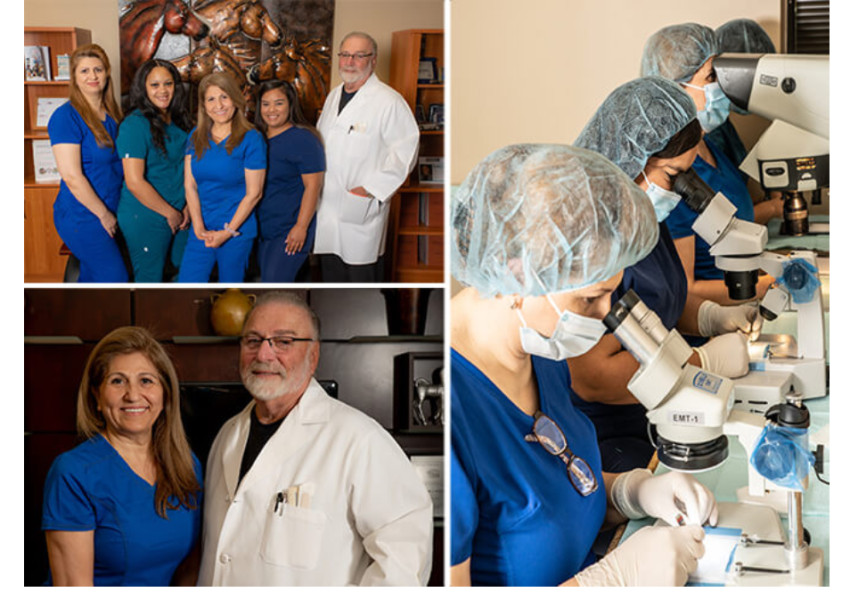
Hair restoration is a topic often associated with men, but it's essential to recognize that women can also experience hair loss. Female pattern baldness, or androgenetic alopecia, is a common condition characterised by the gradual thinning of hair, especially on the top and crown of the scalp. Addressing female pattern baldness requires a nuanced understanding of the causes and effective hair restoration solutions tailored to women's unique needs.
One common misconception is that only men experience pattern baldness. In reality, women can also be affected by genetic factors that contribute to the gradual loss of hair. Female pattern baldness typically manifests as diffuse thinning rather than the receding hairline or bald spots often seen in men. Hormonal changes, ageing, and a genetic predisposition can all contribute to the development of female pattern baldness.
Understanding the root causes is crucial for devising effective hair restoration strategies for women. Hormonal imbalances, such as those during menopause or polycystic ovary syndrome (PCOS), can contribute to hair thinning. Additionally, excessive styling, harsh hair treatments, and certain medications may play a role in female hair loss. Identifying and addressing these underlying factors is essential in developing a comprehensive approach to hair restoration.
One effective hair restoration option for women is topical minoxidil and female hair transplant. Originally developed as a medication to treat high blood pressure, minoxidil was later found to stimulate hair growth when applied topically. In the case of female pattern baldness, minoxidil helps promote blood flow to the hair follicles, prolonging the growth phase of the hair cycle and preventing further thinning. Women can apply minoxidil directly to the scalp, and it is available over-the-counter in various formulations.
Platelet-rich plasma (PRP) therapy is another innovative hair restoration technique gaining popularity among women. PRP involves drawing a small amount of the patient's blood, processing it to concentrate the platelets, and then injecting the PRP into the scalp. Platelets contain growth factors that stimulate hair follicles, promoting hair growth and improving hair density. PRP therapy is a minimally invasive procedure that can be performed in a clinical setting with little to no downtime.
Hair transplant surgery process is a more invasive but highly effective option for women experiencing significant hair loss. Follicular unit transplantation (FUT) and follicular unit extraction (FUE) are two common techniques used in hair transplant procedures. FUT involves removing a strip of scalp with healthy hair follicles and transplanting them to the thinning areas. FUE, on the other hand, involves extracting individual follicular units directly from the donor area and implanting them in the recipient site. While hair transplant surgery can yield natural-looking results, it's essential for women to consult with a qualified surgeon to determine the most suitable approach for their specific case.
Laser therapy is emerging as a non-invasive option for women seeking hair restoration. Low-level laser therapy (LLLT) stimulates hair follicles and improves blood flow to the scalp, promoting hair growth. Devices such as laser combs or caps are available for home use, providing a convenient and discreet option for women looking to address hair thinning.
A holistic approach to female pattern baldness includes addressing lifestyle factors that may contribute to hair loss. Proper nutrition, stress management, and avoiding harsh hair treatments can play a significant role in maintaining healthy hair. Additionally, consulting with healthcare professionals, such as dermatologists or trichologists, can help identify underlying medical conditions contributing to hair loss and guide women toward appropriate treatment options.
In conclusion, hair restoration for women is a multifaceted journey that requires a comprehensive understanding of the causes and tailored solutions with houston hair transplant. Female pattern baldness, while often less visible than in men, can have a significant impact on a woman's self-esteem and well-being. From topical treatments like minoxidil to advanced procedures like PRP therapy and hair transplant surgery, women have a range of options to address hair loss and restore their confidence. By dispelling the myths surrounding hair restoration for women and embracing the available solutions, individuals can take proactive steps toward reclaiming a fuller, healthier head of hair.




